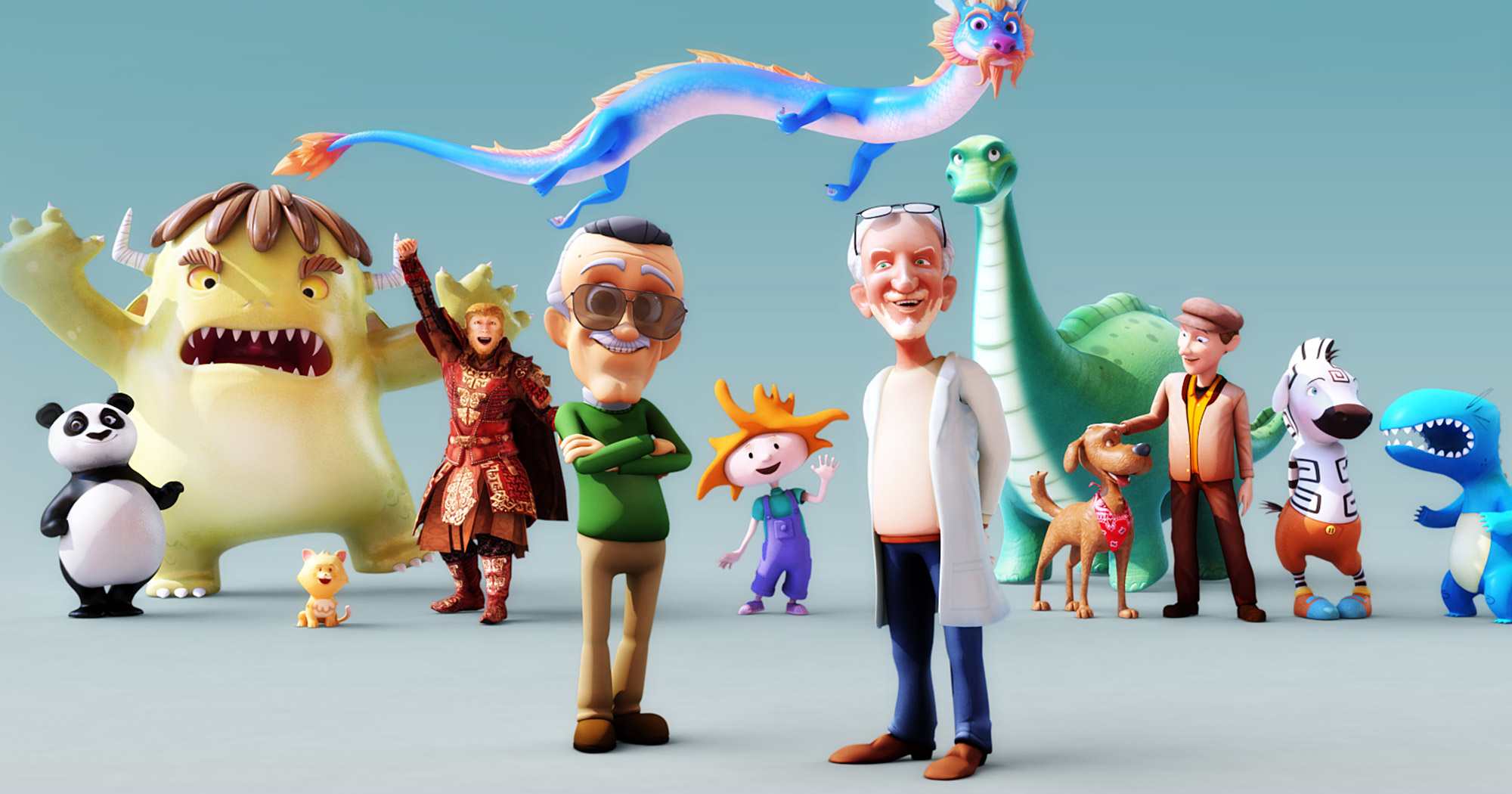When Legend Stan Lee Augments Reality, Picture Books May Never be the Same

“Augmented Reality” might sound like the name of a new superhero Stan Lee just dreamed up—the pickings for original superhero names are pretty slim these days—but it’s actually a radically new, technologically enabled concept in telling stories.
Falling somewhere between video and pictorial storytelling, augmented reality technology has been utilized in several products that have recently come to market—among them, an offering from Stan Lee’s Kids Universe: Dex T-Rex: The Mischievous Little Dinosaur. While Dex T-Rex is a picture book meant for young children, it could be just the first of many applications of the technology. As he did fifty-five years ago at Marvel Comics, Stan the Man may be leading the way into a new era.
To sample augmented reality, one first needs to download Playing4ward’s free “VROOM” app, available for Google and iTunes. Once it’s installed, a reader simply looks through his or her smartphone or tablet at a book that supports the augmented reality experience, like Dex T-Rex or Brenda Faatz and Peter Trimarco’s It’s Just So… picture book.
But what does augmented reality actually deliver, and how does it differ from the more commonly used term “virtual reality”?
“With virtual reality you are required to wear goggles and your entire vision is computer generated,” explains John Attard, CEO and co-founder of Playing4Ward. “With augmented reality any device can be used, such as a cell phone or tablet, and computer graphics are added to the real world that you see through the device’s camera. We also specialize in mixed reality where devices such as Microsoft HoloLens essentially recognize the environment and so, for example, if you throw a virtual ball at your wall it would bounce off.”
Indeed, the augmented reality version of It’s Just So… shows the technology to be extraordinarily immersive. As each page is turned, characters seem to rise up and act out the story for that page, sometimes giving life to details, like peas falling from a table, that a single, static image can only hint at. Any real objects in the camera’s view become part of the scene, meaning animated characters from the book can appear to rest in a reader’s hand, or on top of a sleeping family dog. And if the adjacent page is still visible within the lens’s view, then out of the corner of the eye, one can see that page’s activities still occurring, even when they’re not the primary focus. The book becomes, as near as possible, a living, breathing universe.
Asked if augmented reality was an attempt to make books more like video games, Attard made a distinction. “This is a whole new way of interacting with content. … Our VPOP (Augmented Reality) experience has been designed to entertain but also provide different perspectives and incentives for educational stimulation. As we move forward … our products will become holographic companions that can accompany a child through all manner of experiences, living in the real world right beside them.”
Future plans include a Lizzy’s World platform (online and for mobile devices), featuring the star of It’s Just So… Peter Trimarco also outlined other upcoming projects:
“In partnership with Playing4ward we will produce educational games and even a fully animated short film video in 3D / AR. While developing this project our Lizzy character is being included in a Social Emotional Learning curriculum for schools.”
Playing4ward projects being developed with Stan Lee’s Kids Universe include converting children’s books to augmented reality and video books, and creating entertainment in partnership with The Monkey King for the platform.
All very interesting, you’re saying, but what does this have to do with comics and graphic novels? Well, it doesn’t take a lot of imagination to see some of the potential uses. Any graphic novel, from horror stories to nonfiction, could both preserve the traditional reading experience, and also offer an exciting new way to interact with a story.
Augmented reality sightings are on the rise, and there’s even a new “augmented reality” category for Foreword’s INDIES Book of the Year awards. Also of note to comic book and graphic novel fans is a promotion for FX’s new X-Men spinoff TV series Legion. Showcased in New York, Brooklyn, Chicago, San Francisco, and Hollywood are five “augmented reality murals”.
It’s always a question whether consumers will be willing to embrace a new technology, but if augmented reality catches on, the possibilities are endless. One can’t help but wonder what Stan Lee would have created if he’d had access to augmented technology back in the 1960s. Spider-Man swinging amid skyscrapers, the Hulk and the Thing getting into a fracas, or any of Lee’s fondly remembered stories would have been a much fuller sensory experience, the kind graphic novel readers of every ilk have, until now, only been able to dream about.

Peter Dabbene wrote the graphic novels Ark and Robin Hood. He is a reviewer for Foreword Reviews, and his poetry and stories have been published in many literary journals, collected in the photo book Optimism, and in the story collection Glossolalia. His latest books are Spamming the Spammers and More Spamming the Spammers.
Peter Dabbene
